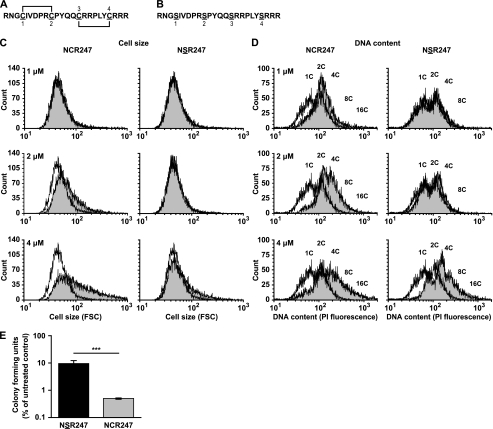FIGURE 1.
Cysteine residues are important for NCR2471–2,3–4 activity. A, NCR2471–2,3–4 sequence showing the S–S bridges between cysteines 1 and 2 and cysteines 3 and 4. B, NSR247 peptide sequence. C and D, flow cytometry analysis of S. meliloti Sm1021 cultures treated for 3 h with (shaded histograms) or without (white histograms) 1, 2, and 4 μm NCR2471–2,3–4 or NSR247 peptide, respectively. The forward scatter (FSC) was measured to estimate relative bacterial cell size (C), and the PI fluorescence was measured to estimate the relative bacterial DNA content (D). C indicates number of chromosome copies. Flow cytometry plots are a representative example of at least two independent experiments. E, colony forming ability of S. meliloti Sm1021 assessed after treatment with 10 μm NSR247 (black bar) or NCR2471–2,3–4 (gray bar) for 3 h relative to an untreated control. The dataset shown is representative of trends observed in two independent experiments. Columns represent mean ± S.E. (error bars) (n = 3), and significance was determined using the two-sided unpaired Student's t test on logarithmic data. ***, p ≤ 0.001.

